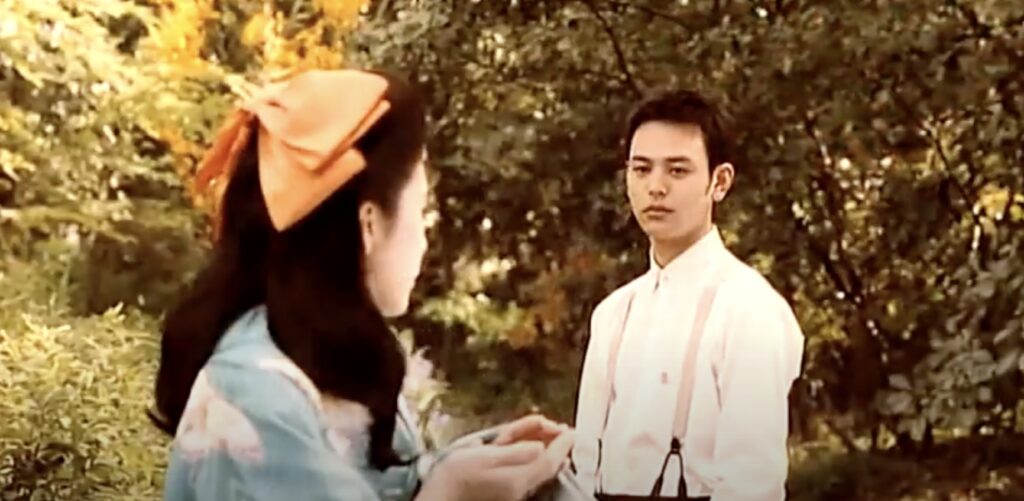MY REVIEW OF A NEW CLASSIC
Spring Snow
If you’ve never read a book by Yukio Mishima, once you dive into Spring Snow, the first novel in the Sea of Fertility tetralogy, you’ll find yourself unable to leave the deep and intricate world of this Japanese author.
I will explain in 5 minutes why that is true.

“Mishima is one of those geniuses born only once every three hundred years. As far as talent is concerned, he is far superior to me.” — Yasunari Kawabata.

A Glimpse into Mishima`s Universe
If you haven’t read any of Yukio Mishima‘s books yet, once you dive into the novel Spring Snow (1968), the first in the Sea of Fertility tetralogy, you’ll be captivated by the complex and profound universe of the Japanese author. You’ll find yourself joining the Matsugae family at the March Doll Festival, admiring the cherry blossoms in April, or attending the Shinto temple festival in May. Mishima‘s poetic abilities and his focus on Japanese traditions will immerse you in the culture with such vivid detail that you’ll feel as though you’re participating yourself. To fully experience the sophisticated world he offers through his refined literary style, add the following volumes to your library: Runaway Horses (1969), The Temple of Dawn (1970), and The Decay of the Angel (1970).
The Sea of Fertility is just one of Mishima’s masterpieces, enjoying enormous success among book lovers, a feat few 20th-century authors have achieved. Mishima was nominated no fewer than three times for the Nobel Prize in Literature. Due to his father’s strictness, when he made his literary debut at just 16 in the magazine Bungei-Bunka, he chose a pseudonym—under which he signed all his work—his real name being Kimitake Hiraoka.
The artist was born in Tokyo on January 14, 1925, into a samurai family, and his interest in samurai culture remained a constant throughout his life. After completing The Decay of the Angel, on November 25, at the age of just 45, Yukio Mishima ended his life by committing seppuku, the ritual suicide used by samurai to preserve their honor. Knowing this may influence how we perceive his work, but it’s important to continue approaching it with curiosity and respect. His work remains a precious gem, a product of the imperfections that are undeniably part of being human. Mishima’s seppukuwas both a tribute to the past he longed for and a protest—an extreme act contrasting sharply with the delicate and sublime literary style I consider flawless.
“A novel of flawless beauty, like a Japanese garden.” — Chicago Sun-Times
The memorable work Spring Snow tells the story of Kiyoaki Matsugae, a young aristocrat torn by his inability to express his passions in a family and society that had expectations far different from what he might have chosen for himself. His wealthy father, dissatisfied with his samurai ancestors’ humble position, wants to ensure his son becomes a perfect nobleman, so he entrusts Kiyoaki to a noble family at the Imperial Court. Kiyoaki‘s sensitivity was likely shaped by being raised in such an environment.
Tradition and Modernity
Kiyoaki’s Japan was a confusing one at the turn of the 20th century, where the societal ideal of a balanced life was supported by both modernism and tradition—two concepts that, in reality, often exclude one another. Thus, our hero is frequently placed in difficult situations, struggling to live a sensitive life, torn between his values and ideals. A central figure in his life is Satoko, initially his friend, and later the girl who captures his heart. Kiyoaki buries his feelings for the beautiful aristocrat deep inside until, at the last possible moment, he finally admits his love for Satoko, who had already been promised in marriage to an imperial prince. But will their love, now facing even greater obstacles, somehow find a way to flourish?
Satoko, of noble origins, embodies both traditional education and the modernized Japan in which she lives. As a result, she experiences inner conflicts where her personal desires often clash with the values she learned in the aristocratic society. Her physical grace, natural beauty, and dignity reflect her innate refinement. As expected from a young woman raised in privileged Japanese society, Satoko is disciplined and responsible, with deep respect for aristocratic values and social norms. These traits might suggest a rigid character, but Mishima’s heroine, far from being superficial, is capable of deep and passionate love. The love she feels for Kiyoaki matures her, requiring determination and courage as she fights for their love, even though she had already been promised to a prince.
A Shakespearean Love Story
Kiyoaki and Satoko grew up together, but the dynamic of their relationship changes when friendship evolves into love. The expectations of those around them, which they had been raised to fulfill, do nothing to help solidify their bond. Kiyoaki‘s egocentric nature also stands in the way of realizing his own dreams. Satoko, like a chess player, must consider not only her own moves but also those of others, including the immature Kiyoaki. His slow pace contrasts sharply with Satoko’s almost metamorphic transformation from an obedient girl into a woman willing to make radical decisions to achieve her love. Mishima uses her character to highlight themes of sacrifice and renunciation.
A Work of Ephemerality
Love, suffering, destiny, and honor are just a few of the central themes of the novel. Through their deep reflections on identity, the protagonists add psychological depth to the story, offering a complex perspective shaped by both philosophical inquiry and the novel’s symbolic meaning.
Spring Snow serves as a metaphor through which Mishima conveys the fleeting nature of happiness, as well as the beauty and purity of the love between the two protagonists. This is not just a love story but also a meditation — a reflection on life from the standpoint of tradition and societal norms, under the inescapable influence of time, which, as it passes, brings both sunset and transformation. Time’s passing emphasizes the themes of transience and change that permeate this work.


